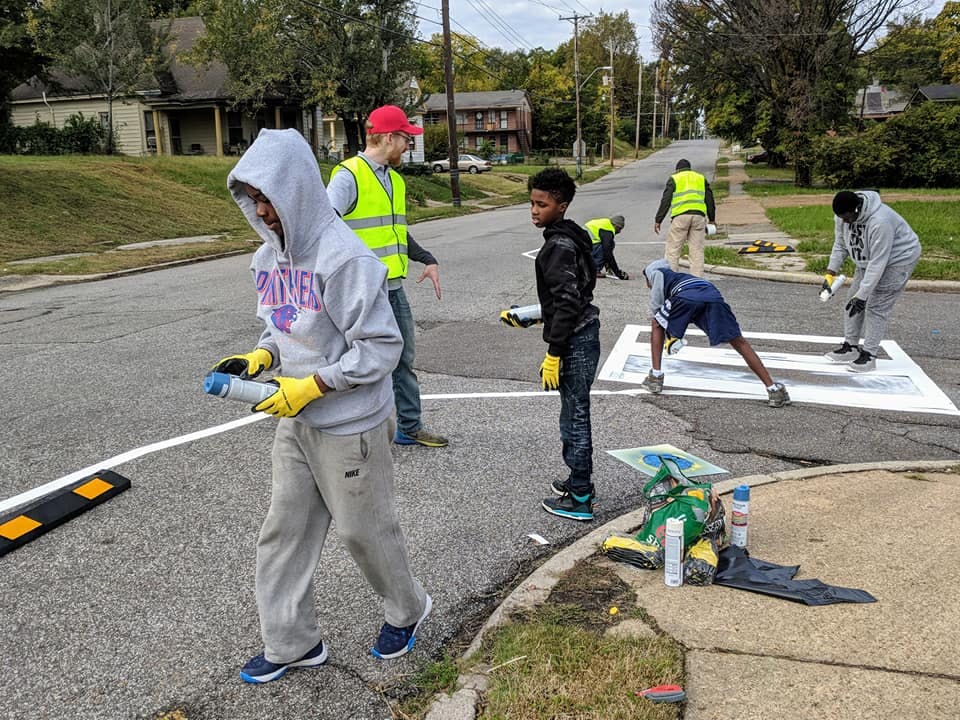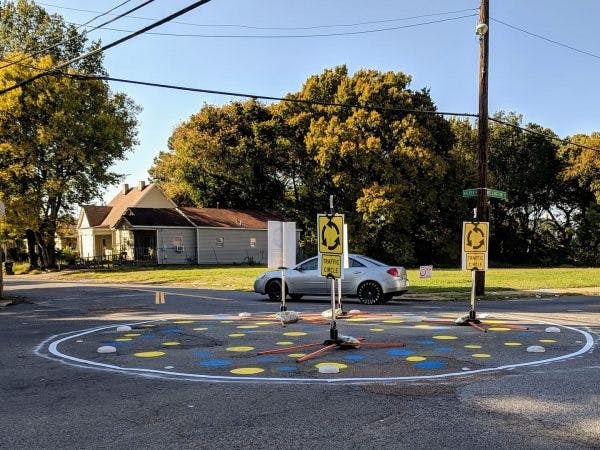European Strategies on Rural Memphis Streets
By: PeopleForBikes Staff

Going to the Netherlands on a study tour to learn about bike infrastructure is exciting and inspiring. At times, it’s also overwhelming — especially when the infrastructure at home seems far from ideal. How do you even start making improvements?
That’s why Nick Oyler, Bikeway and Pedestrian Manager for Memphis, and his team of eight colleagues, had specific goals when they went on their trip this past June. Each person would create their own project — something they saw or were influenced by on the trip — and put it into action when they returned to South Memphis.
For Oyler, every day in the Netherlands was full of seeing things that were “impressive and seemingly impossible to do in Memphis.” But one thing that really got his attention was the “bicycle street,” or what the Dutch call, Fietsstraat. Open to both bikes and cars, the streets are designed in a way that calms traffic and gives priority to bikes. Cars stay in the center lanes of the road, and yield to bikes on outer lanes.
Within the first day of the trip, Oyler was fascinated by this concept. “I researched it in my hotel at the end of the night,” he said, “and discovered that it wasn’t an entirely new concept in the U.S.” In America, they’re called “advisory bike lanes” or “advisory shoulders.” Oyler wanted to find a way to implement the idea in South Memphis.
He discovered a white paper put out by Alta. The document provided all kinds of guidelines for adding infrastructure to various existing roadways, including rural contexts. Oyler had the framework to make an impact on his own city.

Cooperating structure
According to Alta, an advisory bike lane is “a preferred space for bicyclists and motorists to operate on narrow streets that would otherwise be a shared roadway environment.” There are several versions of the advisory lane, but the idea is that an existing two-way road can be converted to shared space — even when there is little to no room for bike lanes to be added. Creating an advisory bike lane forces car traffic to move more slowly and be more cautious of bike traffic. After first-hand observation in the Netherlands, and time studying the U.S. examples, Oyler felt certain advisory lanes could be implemented in the Big Jump area of Memphis.
Working closely with his team and the City of Memphis, Oyler just launched their first trial versions of advisory lanes on Walker Avenue. The trial version, which they’re calling a “demonstration,” will be in place for a month. They launched a community outreach program, creating pamphlets and signs, and spoke with residents directly — to explain how it would all work. After the trial period, Oyler and his team will complete a door-to-door survey to gather feedback from residents.

Early reactions
Just weeks after the installation of the advisory bike lanes, it’s too early to determine the results, but generally residents seem thrilled that positive change and investment is underway in their neighborhood. According to Oyler, “Typically for these kinds of demonstration projects, I’m used to receiving a slew of critical emails and phone calls. Since the installation two weeks ago, I’ve only received one call – and that individual ultimately issued her support after better understanding the project.”
Of the early reactions from residents, Oyler says, “The day we installed the advisory bike lanes, a man who resides on Walker Avenue returned home on his bike to find the new striping in place. He excitedly shouted to me from across the street, ‘Are these bike lanes?’” For the next 10 minutes, the man rode up and down the street shouting to his neighbors, “We got bike lanes!”
Small changes can make a big impact. It’s easy to think of infrastructure as physical structures; but really, it’s about the people. It’s about lives improved and communities strengthened.
Related Topics:
